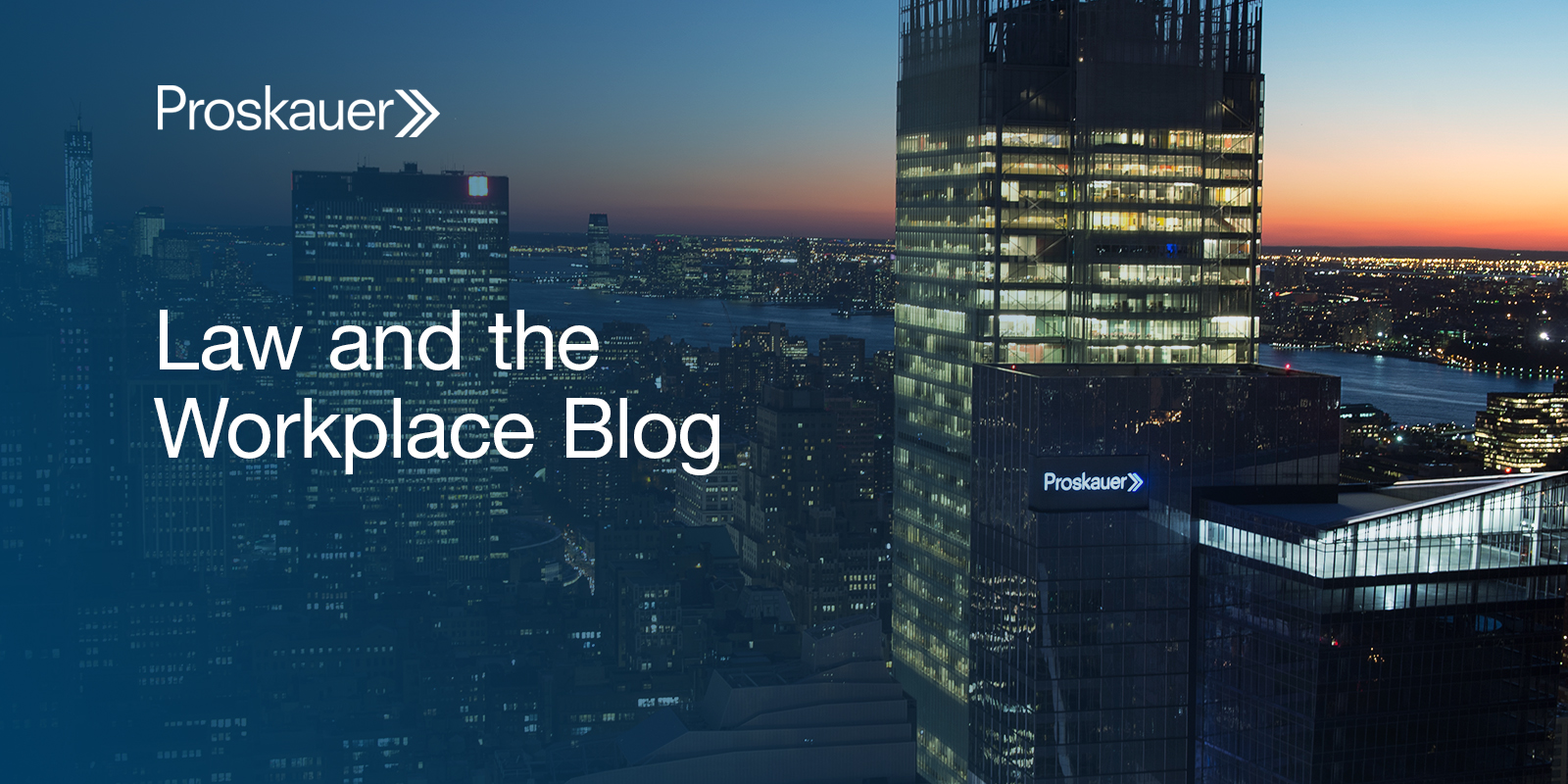California’s New Heat Illness Prevention Standard for Indoor Workplaces Is Now Effective
California’s new “Heat Illness Prevention in Indoor Places of Employment” standard is now in effect as of July 23, 2024. The new regulation applies to most California workplaces where the indoor temperature reaches 82°F or higher (e.g., warehouses, distribution centers, manufacturing plants, and restaurants). The standard requires those employers to implement a written indoor heat illness prevention plan that includes procedures for accessing water and cool-down areas, acclimatization, training employees, and emergency response measures. Covered employers who have not already drafted and implemented their plan should do so immediately.
1. Background
The adoption of an indoor heat illness prevention standard has been on the “to-do list” of California’s Division of Occupational Safety and Health (“Cal/OSHA”) for a long time. Cal/OSHA first instituted a heat illness prevention standard for outdoor workplaces (California Code of Regulations, Title 8, section 3395) back in 2006. Ten years later, as a result of the passage of Senate Bill 1167, Cal/OSHA was tasked with establishing a similar standard for workers in indoor places of employment by January 1, 2019. The Board finally approved the “Heat Illness Prevention in Indoor Places of Employment” standard (California Code of Regulations, Title 8, section 3396) (“Section 3396”) on June 20, 2024, and requested that the Office of Administrative Law (“OAL”) to (1) expedite approval of the new indoor heat illness prevention standard and (2) make the standard become effective immediately after approval due to increased safety concerns stemming from higher summer temperatures. On July 23, 2024, the Office of Administrative Law obliged the Standards Board’s request, issuing its approval and making the regulation effective immediately.
2. Covered Employers
The language in Section 3396 that determines whether an employer’s workplace is covered by the new regulation can be confusing. Ultimately, there are two main temperatures that matter for employers under the new regulation: 82°F and 87°F. The requirements that apply under the new regulation depend on those temperatures, which can result in two different situations.
a. Indoor Workplaces That Are 82°F or Higher
Employers with an indoor workplace where the temperature/heat index is 82°F or higher when employees are present must implement a written Indoor Heat Illness Prevention Plan that includes procedures for accessing water and cool-down areas, acclimatization, and emergency response measures, discussed in Section 3 below. Additionally, training must be provided to all employees (and their supervisors) who perform “work that should reasonably be anticipated to result in exposure to the risk of heat illness.”
b. Indoor Workplaces That Are 87°F or Higher and Certain Workplaces That Are 82°F or Higher
On top of complying with the above, employers must comply with additional requirements where the temperature/heat index is 87°F or higher, or where the temperature/heat index is 82°F but feels hotter because employees are (1) wearing clothing that restricts heat removal or (2) working in high radiant heat areas. The standard defines what qualifies as “clothing that restricts heat removal” and “radiant heat”. The extra requirements include measuring and recording the temperature and heat index and implementing control measures where feasible, as discussed in Section 4 below.
c. Exceptions on Compliance
The requirements under Section 3396 do not apply in the following situations:
- Workplaces with brief or incidental heat exposure where an employee is exposed to a temperature/heat index at or above 82°F and below 95°F for less than 15 minutes in any 60-minute period. This exception does not apply to vehicles without effective/functioning air-conditioning.
- Employees who telework from a location of the employee’s choice that is not under the control of the employer.
- Emergency operations directly involved in the protection of life or property.
3. Written Indoor Heat Illness Prevention Plan Requirement
Section 3396 mandates that covered employers establish, implement, and maintain an Indoor Heat Illness Prevention Plan (“IHIPP”) with specific required elements and procedures. The IHIPP must be in writing and in the language understood by the majority of the employees. It must be made available at the worksite to employees and to Cal/OSHA upon request. The IHIPP may appear as a standalone section in the employer’s Injury and Illness Prevention Program or as a separate document. If utilizing a separate document, the IHIPP procedures can be combined with an employer’s existing Heat Illness Prevention Plan for outdoor workplaces.
The IHIPP must include the following procedures:
- Provision of Drinking Water: Covered employers must give employees free access to clean, cool drinking water as close as practicable to their work area. If a continuous water supply is not possible, employers must provide enough water (i.e., one quart of drinking water per hour) for each employee.
- Provision of Cool-Down Rest Periods: Covered employers must allow and encourage employees to take a “preventative cool-down rest” in a cool-down area when employees feel the need to do so to protect themselves from overheating. Access to cool-down areas must be permitted at all times and employers must ensure there are one or more cool-down areas that are maintained at a temperature below 82°F, blocked from direct sunlight, and shielded from other high radiant heat sources to the extent feasible. The standard instructs that employees must not be ordered back to work until any signs or symptoms of heat illness have abated, and in no event less than five minutes in addition to the time needed to access the cool-down area. Notably, employers who fail to provide a preventative cool-down rest must provide employees with one hour of premium pay at the regular rate of pay, similar to where an employer fails to authorize or permit a compliant rest period.
- Acclimatization: Acclimatization is the process of allowing individuals to adjust to hot environments over time, reducing their risk of heat-related illnesses. Covered employers must closely observe employees who are newly assigned to high heat conditions for signs of heat stress during their first 14 days of work in these conditions. Additionally, during a heatwave, if employers cannot reduce indoor heat using methods like air conditioning or fans, they must have a supervisor closely observe employees for any heat-related issues.
- Emergency Response Procedures: Covered employers must have a plan for responding to symptoms and/or signs of heat illness and heat illness related emergencies.
4. Assessment and Control Measures for Certain Indoor Workplaces
Where the indoor temperature/heat index is 87°F or higher, or where the temperature/heat index is 82°F but feels hotter because employees are (1) wearing clothing that restricts heat removal or (2) working in high radiant heat areas, employers also must comply with the following requirements:
- Temperature and Heat Index Assessment: When it is “reasonable to suspect” that the temperature/heat index either reaches 87°F (or 82°F with employees wearing heat restrictive clothing or working in a high radiant heat area), employers must measure and record the temperature and heat index, noting the higher of the two, along with the date, time, and place of each reading. Measurements must be taken again when they are reasonably expected to be 10 degrees or more above the previous measurements. Employers must maintain these records for 12 months or until the next measurements are taken, whichever is later. The records must be made available to employees, designated representatives, and Cal/OSHA upon request. However, employers do have the option of bypassing the requirement to measure the temperature and heat index by assuming that the threshold temperature/heat index has been reached and moving on to implementation of control measures to minimize the risk of heat illness.
- Evaluation and Implementation of Control Measures: Employers must use control measures to minimize the risk of heat illness. The selection of control measures must be based on the environmental risk factors for heat illness present in the work area. Control measures may include engineering controls (e.g., installing air conditioning, adding heat-reducing insulation, using reflective coatings or materials to block heat radiation from equipment or the sun) and/or administrative controls (e.g., adjusting work schedules to avoid the hottest parts of the day, rotating employees to cooler tasks to limit heat exposure, increasing the frequency and duration of breaks in cool areas). If both feasible engineering and administrative controls are not enough to decrease the temperature and minimize the risk of heat illness, then “personal heat-protective equipment” should be provided (e.g., vests filled with ice packs, uniforms with fabrics that wick away sweat and allow ventilation, providing portable battery-operated fans).
5. Required Employee Training
Section 3396 requires employers to provide comprehensive training on the IHIPP and heat illness risk factors to supervisory and non-supervisory employees “before the employee engages in work that should reasonably be anticipated to result in exposure to the risk of heat illness.” Specifically, the training must cover:
- The environmental and personal risk factors for heat illness;
- The employer’s procedures for complying with the standard’s requirements;
- The importance of frequent consumption of small quantities of water;
- The concept, importance, and methods of acclimatization;
- The different types of heat illness, the common signs and symptoms of heat illness, and appropriate first aid and/or emergency responses to the different types of heat illness;
- The importance of reporting symptoms or signs of heat illness; and
- The employer’s procedures for responding to signs or symptoms of possible heat illness, contacting emergency medical services, transporting employees to a point where they can be reached by an emergency responder if necessary, and ensuring that clear and precise directions to the worksite can and will be provided as needed to emergency responders.
Employers must provide additional training for supervisory employees on the following topics:
- How the supervisor is expected to comply with the standard’s requirements as determined by the employer;
- The procedures the supervisor is to follow when an employee exhibits signs or reports symptoms consistent with possible heat illness, including emergency response procedures; and
- Where the work area is affected by outdoor temperatures, how to monitor weather reports and how to respond to hot weather advisories.
6. Cal/OSHA Guidance
Presumably in support of the push to expedite the standard’s effective date, Cal/OSHA already published guidance for employers, including a comparison of the outdoor and indoor standards. The guidance also includes a combined indoor and outdoor heat illness prevention model plan and FAQ guidance. Importantly, the FAQ guidance notes that an IHIPP that “is little more than a restatement of the safety orders does not satisfy the standard; instead, it must be specific and customized to the employer’s operations.”
7. Next Steps
Employers who have not done so already should measure the temperature and heat index in the workplace to determine if the new standard may apply. If it does, the employer should begin to take active steps to ensure compliance by:
- Reviewing employees’ access to water and cool-down areas, the need and process for acclimatization, and applicable emergency response procedures;
- Identifying how to measure and maintain temperature/heat index records and what control measures to implement (if these additional requirements must be satisfied);
- Drafting the written IHIPP; and
- Preparing and conducting training for supervisors and employees.
Employers with any questions or concerns about compliance should consult with experienced employment law counsel.
This article is not an unequivocal statement of the law, but instead offers some potential issues to consider with counsel. This is provided for informational purposes only and does not constitute legal advice and is not intended to form an attorney-client relationship. Please contact your Sheppard Mullin attorney for additional information.






